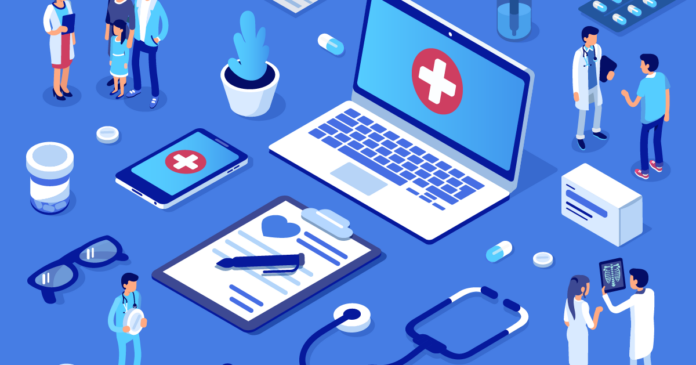As we witness an ever-increasing need for affordable and accessible healthcare, finding effective strategies to reduce costs without compromising quality has become a burning imperative. Let’s take a look at pioneering methods and technologies that are transforming the healthcare landscape, revolutionizing traditional practices, and ultimately paving the way toward a more sustainable future. Get ready to embark on an inspiring journey of innovation that promises to reshape how we approach cost reduction in one of society’s most critical sectors: healthcare.
Software Solutions

Every industry in today’s fast-paced world relies on technology, and the healthcare industry is no exception. When it comes to reducing costs in the healthcare industry, certain software solutions have emerged as a game-changer.
One of the most revolutionary solutions that has gained significant attention is electronic health records (EHR) systems. This advanced technology streamlines patient information management, eliminating the need for bulky paper files and making medical histories accessible at the click of a button. EHR systems not only improve efficiency but also reduce errors caused by manual documentation.
Furthermore, there are software applications aimed at improving interconnectivity between different departments within hospitals or clinics. These tools enhance communication and collaboration among healthcare professionals through secure messaging platforms, ensuring critical information is shared promptly.
In recent years, telemedicine platforms have provided an alternative means of healthcare delivery that transcends geographic barriers. Through secure video-conferencing tools and remote monitoring capabilities, patients can now receive quality care from the comfort of their homes while reducing unnecessary hospital visits and associated costs.
Providers of specific healthcare services may even find software out there that has been tailor-made for them. For example, NDIS software aims to streamline processes, promote collaboration among stakeholders, and ultimately enhance the quality of care provided to people living with disabilities. With its user-friendly interface and comprehensive features, this software enables service providers to effectively manage their clients’ plans while reducing administrative burdens; plus, as this NDIS provider savings calculator suggests, it can save providers some serious money in the process.
Outsourcing Non-core Services

In the healthcare industry, where every penny counts and patient satisfaction is paramount, one money-saving solution that has been gaining attention is the outsourcing of non-core services – a strategy that enables healthcare providers to redirect their focus towards core competencies while achieving significant cost savings.
What are these non-core services? Imagine the countless administrative tasks that burden your organization daily – medical billing and coding, appointment scheduling, data entry, and transcription services – just to name a few. These essential but time-consuming functions can drain precious resources from your primary mission: delivering exceptional patient care.
By entrusting these non-core functions to specialized external providers who have mastered efficiency through experience and technology, you free up invaluable internal resources. This strategic reallocation allows your staff to concentrate on what truly matters: patients’ well-being.
Outsourcing not only brings financial benefits but also leads to improved accuracy and compliance. External partners dedicated exclusively to specific tasks possess advanced systems designed for precision and adherence to complex regulations. The reduction of errors translates into minimized risks and elevated trust among both patients and stakeholders alike.
Optimizing Supply Chain Management

As the backbone of the healthcare industry, supply chain management is a critical element that can make or break operations. From ensuring the availability of essential medical supplies to enhancing efficiency in distribution processes, optimizing supply chain management has become paramount.
In this age of innovation and technology, embracing new solutions can prove instrumental in reducing costs within the healthcare sector. The integration of artificial intelligence (AI) and data analytics enables providers to analyze supply patterns and predict demand accurately. By predicting when certain items may be needed, hospitals and clinics can better prepare for unexpected emergencies or fluctuations in patient volume.
Furthermore, leveraging advanced tracking systems can maximize inventory control by minimizing overstock or shortages. Utilizing RFID tags or barcodes allows real-time visibility into product movement throughout every stage—from manufacturing to delivery—resulting in reduced waste and improved responsiveness.
Collaboration also plays a pivotal role in streamlining supply chains. Efficient communication among suppliers, manufacturers, distributors, and healthcare providers ensures a seamless flow of goods from one point to another while eliminating unnecessary delays or duplications.
Ultimately, optimal supply chain management not only leads to improved cost-efficiency in healthcare but also plays a crucial role in enhancing patient outcomes by ensuring access to vital resources when they are most needed.
Leveraging Analytics For Quality Improvement

While data analysis may not be the first thing that comes to mind when envisioning a hospital or clinic, its potential for revolutionizing healthcare delivery should not be underestimated. With advancements in technology and an ever-increasing amount of available data, healthcare providers can now harness the insights hidden within this vast ocean of information.
Analytics allows organizations to identify trends, patterns, and correlations that were once invisible to human eyes. By employing sophisticated algorithms and machine learning techniques on extensive datasets, it becomes possible to detect areas ripe for improvement, from reducing readmission rates and unnecessary procedures to optimizing resource allocation.
Moreover, analytics provides valuable predictive capabilities by forecasting future health outcomes based on historical records. Armed with such foresight, clinicians can make informed decisions in real time instead of relying solely on their experience or intuition.
Embracing analytics is more than just crunching numbers; it empowers stakeholders across every level of the organization with actionable intelligence. From administrators refining operational processes to clinicians delivering targeted interventions and patients making more informed choices about their well-being, everyone benefits from leveraging analytics for quality improvement.
Conclusion
Reducing costs in the healthcare industry requires innovative strategies. Technology and analytics can be used to identify areas where money is being wasted, while patient-centered care processes help reduce costs by improving efficiency and outcomes. In addition, cost reduction strategies should also focus on creating long-term sustainable savings such as financial incentives for providers and patients. Implementing these measures across all aspects of the healthcare system will enable hospitals and clinics to save more resources which can then be reinvested into improving the quality of care for their patients.







